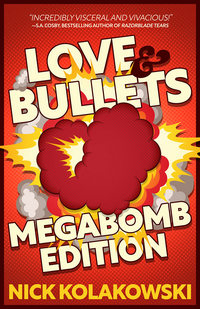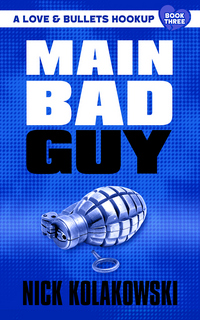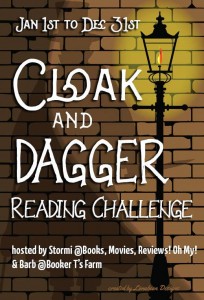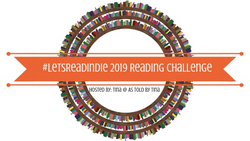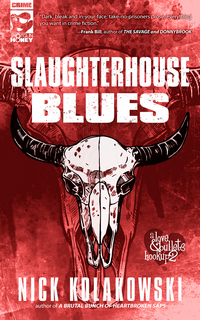I also did a Q&A with the author about this book, give it a look!
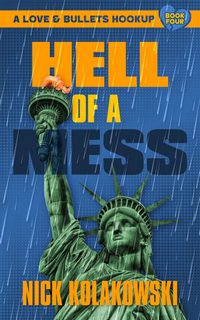 Hell of a Mess
Hell of a Mess
DETAILS: Series: Love & Bullets, #4 Publisher: Shotgun Honey Books Publication Date: August 26, 2022 Format: eARC Length: 234 Read Date: August 1, 2022

What’s Hell of a Mess About?
Well, isn’t that a tricky question? There is too much. Let me sum up. There are multiple people who start off intending to commit one crime and end up doing something entirely different.
Fiona’s been hired to steal something, and it’s a timely thing (and she’s not deterred by much), so despite an impending hurricane, she goes for it. Sure, the Inside Man tries to wave her off, but, again—she’s not deterred by much. Which is a shame—she should’ve paid attention to either the weather or the Inside Man. She ends up with a price on her head and multiple people around the city.
While she’s busy, Bill’s trying to prep for the storm in the home they’re squatting in when some police break in looking for the man who lives there. One thing leads to another, and they kidnap Bill, believing he can lead them to the millions his former employer had hidden away.
Thankfully. that assassin they thought Fiona killed at the end of A Brutal Bunch of Heartbroken Saps survived—readers knew that, but Fiona and Bill didn’t. Not only did he live, but he’s been keeping tabs on them. He’s been trying to live a different—less lethal—life and he has a chance to help them. Will he be enough?
(I have no idea if the above makes any sense—trying to cram it into three brief paragraphs doesn’t do the plot any favors. In the non-condensed version, it works. Trust me.)
The Unnamed Assassin
Up to the point where it looked like Fiona killed him (maybe a little sooner), I thought that the hitman who was sent after Bill in the first book was the protagonist. His is the only first-person perspective we get through the series—almost like he’s relaying what he knows and hears about this crazy couple while he’s dealing with his own problems like they’re a diversion for him.
His personal arc is very different from theirs—they claim to be trying to get out and live a straight life, if only they get one more decent score to set them up. The unnamed assassin is going a different path, he’s still a violent criminal, but like Jules Winnfield, he’s looking for something more. There are lines he won’t cross anymore (he seems to be making those rules up on the fly, but at least he has them.
As you can probably tell, I find it difficult to articulate his development and role in the series—but using him (sparingly, on the whole) and his arc throughout in juxtaposition to Fiona and Bill adds a layer to these books that few authors would have utilized, but make the whole thing better.
Be sure to check out my Q&A with Kolakowski (posting later today) for more about him.
Unanswered Questions
The thing that really kicks off the Fiona storyline is her stumbling across something she wasn’t expecting while discovering the thing she came to steal wasn’t there. Her discovery of the other nefarious action—and the way she prevented it from being completed*—is what starts the manhunt for her, more than the attempted heist. If she’d just walked away, I think it’s likely no one would’ve come after her.
* It is so tricky to discuss this obliquely.
Then when it comes time for Fiona to go save Bill, that storyline is dropped. Which is actually fine and good, because ultimately what it’s replaced by is more interesting. But in the back of my mind couldn’t stop asking—and, a week later, still can’t—what happened? What led up to Fiona’s discovery? What happened after she and the unnamed killer ran off to rescue Bill?
Typically, leaving these threads hanging would annoy me enough that I’d downgrade a novel over it—but Kolakowski pulls it off. If you’re going to abandon a plotline, this is the way to do it.
That said, I’d pony up twice the typical Shotgun Honey novella price today to get Love & Bullets #5 if it picks up right after this to tell the rest of that story. Maybe thrice.
So, what did I think about Hell of a Mess?
The previous three installments were novellas, but this is a novel, clocking in at 50-100 pages longer than the rest. And it didn’t feel like it at all. It was the same adrenaline-fueled, not-quite-frenzied pace and was over before I was ready for it to be. My daily schedule kept this from being a one-sitting read, but I think I could’ve done it in one sitting without realizing it.
This is pulpy fun. There’s action, there’s heart, there’s comedy (some subtle, some absolutely not), there’s a lot of violence, and you can’t forget the bunch of heartbroken saps that are at the center of things. They’re crooks and killers that really seem like decent people when you stack them up next to the nastier crooks and killers they can’t stop encountering. In the middle of all that chaos (and you can’t forget the chaos of the storm), there’s hope, forgiveness, and love. And who can’t use a little of that?
I don’t know if Kolakowski is going to come back to these characters in the future—I’d be content with what he’s given already, but I also know that I’d jump on any future installments, too. I encourage you to do the same.

This post contains an affiliate link. If you purchase from it, I will get a small commission at no additional cost to you. As always, the opinions expressed are my own.
![]()




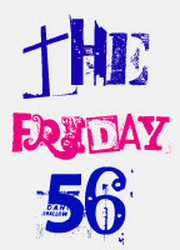
 Grab a book, any book.
Grab a book, any book.